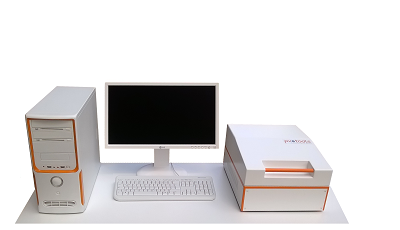接触电阻率和薄层电阻 TLM-SCAN+

接触电阻率和薄层电阻 TLM-SCAN+
前金属化的接触电阻是对丝网印刷太阳能电池的总串联电阻的重要贡献。 具有合适测试结构的转移长度方法是将接触电阻与其他串联电阻效应分开的最佳方法。 然而,接触电阻可以在太阳能电池上显着变化,因此需要在成品太阳能电池上以空间分辨率测量它的方法。 TLM-SCAN产生太阳能电池的接触电阻率的映射,该太阳能电池用激光或切割锯切割成条纹。
右侧的映射显示了分辨率和可重复性,因为它显示了14次测量的相同条带。
接触电阻率测量仪
这款紧凑型仪器测量成品太阳能电池的接触电阻率,手指线电阻,手指宽度和手指高度,或者测试结构。
通过在所有轴上电动化,可以通过按一个按钮来创建所有这些方法的地图。
用于测量薄扩散层的薄层电阻和晶圆电阻率的四点探头,使得TLM-SCAN 成为一种低成本,快速,高质量的四点探针贴图仪。
使操作更简单的功能:
自动位置校正以获得最佳接触质量
盖子关闭时自动启动
自动采样编号
软件探头识别
精确的导航与欢乐棒和显微镜相机
通过点击图像来探测定位和重新测量单点
一个样品上多个TLM测试图案的批处理模式
序列模式通过按一个按钮来测量接触电阻率和手指几何图形的映射

Contact resistivity and more
Contact resistivity and sheet resistance
The contact resistance of the front metallization is an important contribution to the total series resistance of screen-printed solar cells. The transfer length method with a suitable test structure is the best method to separate the contact resistance from other series resistance effects. However, the contact resistance may vary considerably over the solar cell so a method to measure it with spatial resolution on the finished solar cell is necessary. The TLM-SCAN creates mappings of the contact resistivity of a solar cell that is cut into stripes with a laser or a dicing saw.
The mapping on the right demonstrates the resolution and repeatabilty as it shows the same stripe measured 14 times.

![]()